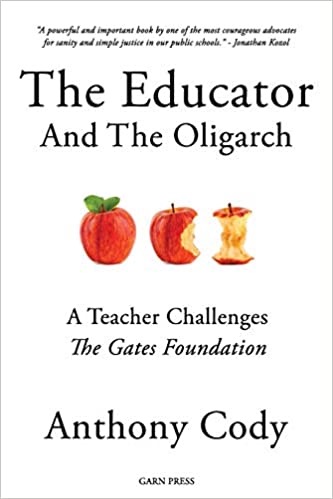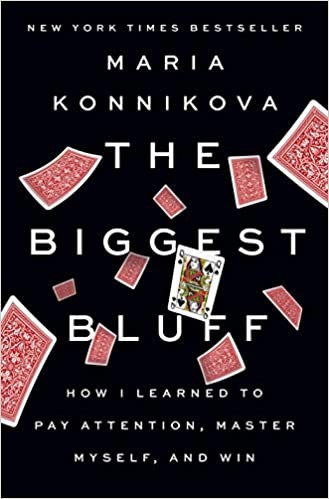
The Educator And The Oligarch: A Teacher Challenges The Gates Foundation by Anthony Cody shows how the Gates Foundations’ efforts to reform education have had a mostly negative impact. By spending a small fraction of the total education budget, people like Gates can buy politicians, muzzle the media, and control many special interest groups and non-profit organizations with grant money aimed at advancing their agenda. Please purchase this book and spread the word. (Note: Like every other book summarized here, this one was written prior to the COVID-19 pandemic.)
Preface and Introduction
- The thrust of this book is that something is seriously wrong with our system when one of the richest men in the world can spend a few billion dollars and seize the reins of education policy. By funding almost everyone who does advocacy, including teacher unions, Gates can call the tune. The tune is Common Core and associated tests that are designed to yield wide-spread failure. Like tobacco companies in the 1960s, their sponsored research tells them what they want to hear. This undermines the public’s democratic control of education and devalues the teaching profession. There is nothing generous in using the power of wealth this way.
- Unlike previous grant efforts by wealthy foundations, the Gates Foundation’s approach was different. Their starting point was “we know what is broken and we know how to fix it.” They invite proposals by directly contacting organizations. They then collaborate with the organizations to develop proposals that align with their agenda. With their vast wealth, an entire sector of organizations became dependent on their funds.
Part I: The Assault on Public Education by Bill Gates
1. Bill Gates’ Big Play: How Much Can Money Buy in Education?
- Gate’s vision starts will the total reliance on standardized tests that were already required by federal law (NCLB). These tests were flawed and NCLB was bound to fail so it was necessary to develop a new generation of tests based on new standards known as the Common Core. It also helped to get staff from the Gate’s Foundation transferred to the Federal Department of Education. Gates held that the field of education didn’t know much about teaching. He started by funding research that defined effectiveness as high test scores. This means that teachers get paid for these results. Next, he donated to advocacy groups to the extent that he became their largest donor. The final step was to donate to the media’s efforts to cover education.
2. Circular Reasoning at the Gates: Education Nation Off to a Confusing Start
- Here are excerpts from a Teacher Town Hall from 2011 on NBC moderated by Brian Williams. He tells the audience that they will be using facts provided by the Gates Foundation as they are the largest single funder of education in the world. (Doug: I think the US government is the largest single funder.) On this show, Melinda Gates claims that there are multiple measures that they are using along with test scores such as administrator and peer observations along with student questionnaires. But, the only models of these other measures that she wants to use are those that improve test scores. Here the author suggests that many of the strategies used to boost scores are harmful to our students.
3. Teachers Face Good Cops or Bad Cops in Push for Evaluations
- The bad cop is the New York Post, which published the names of teachers with the worst scores. The good cops are Bill Gates and Michelle Ree who said this is wrong and that multiple measures should be used in addition to tests. Their other measures, as we have seen, are correlated to test scores. These good cops also push value-added ratings (VAR), which research has shown to be highly unstable for individual teachers. Translation: VARs are garbage and should never be used as part of a teacher rating system. There is also the false assumption that there are a significant number of crummy teachers who need to be weeded out. (Doug: From what I’ve seen as an educator since 1969, crummy teachers weed themselves out as being a bad teacher really sucks.) As it stands, 50% of teachers leave the profession within five years and turnover rates in high-poverty schools are 20% each year.
4. Cui Bono? The Question Rarely Asked, Let Alone Investigated
- Cui bono means who benefits. Journalists should be asking this question, but they don’t seem to be doing so. They are, however, repeating false ideas that the reformers put forward such as our public schools are failing due to the ineffective teachers that need to be fired. They also tout the success of charter schools, which overall is not the case. The winners here are the testing companies, curriculum designers and publishers, consultants, technology and software companies, and various leadership organizations.
5. Bill Gates Discovers Money Cannot Buy Teachers
- The main idea here is that people, in general, can sense when they are being manipulated and coerced. When this happens they resent it and resist. Here we are talking specifically about teachers. They aren’t opposed to being evaluated based on student work such as portfolios, but they resist being evaluated by invalid standardized tests that are closely correlated with the socioeconomic background of their students. Teachers, therefore, are justified in being ungrateful for all the money Gates has poured into education to remake it in his own image.
6. Bill Gates Goes to College. Has He Learned From His k12 Project?
- Gates is also determined to change higher education with a focus on tests that measure specific skills that employers want. His focus is also on online courses, which have been shown to be less effective for all save the brightest. (Doug: We are seeing that now as well with remote learning) The approach sends the message that education is only for job preparation, which the author rejects. Blended learning, which offers a mix of online and in-person instruction appears to be effective, but 100% online doe not appear to be.
7. Is ASCD Embracing Market-Driven Education Reform?
- Organizations like ASCD are being directly paid to support the implementation of Common Core, which converts them into advocates for the controversial standards. Along with it comes “market-driven” systems, which feature a push for charter schools, private schools, and vouchers at the expense of public schools. In 2011, the Gates Foundation awarded ASCD a grant of $3 million to help implement the Common Core. If you just read ASCD’s journal you wouldn’t know that the Common Core is controversial.
8. Is Gate’s Money Going to Influence the National Board?
- While Gates claims that teachers participated in the creation of the Common Core Standards they were not involved. He also tries to convince us that since the schools can create the curriculum, teachers can still teach as they wish. He negates this when he says that he will know that his efforts have succeeded when the curriculum and the tests align with the standards. He pushes for control of schools by mayors as when just one person is in charge, change can be made more efficiently. It also means that he only has one person he needs to influence or buy off. Note that cities, where mayors are in charge, have fared worse. Other organizations know that if they want his money they have to sing this tune.
9. Gates and Duncan Seek to Use Trust in Teachers to Promote Common Core.
- If Gates and the Department of Education under Duncan (appointed by Obama) trusted teachers, they would not have had Common Core standards drafted by test makers instead of educators. They would not have created the pseudoscience of VAM to try to hunt down bad teachers. If leadership organizations were true leaders, they would not have allowed themselves to be co-opted and bought off. Gates seems to operate by bad analogies. One mentioned here is “standardization is important to allow for innovation… like the standardized outlets we have in our houses.” He sees innovation as the domain of the creators of mass-produced tools and the teachers as consumers. He accuses teachers of not knowing much about effective teaching, which is why he came up with the Common Core and its testing to define excellence.












